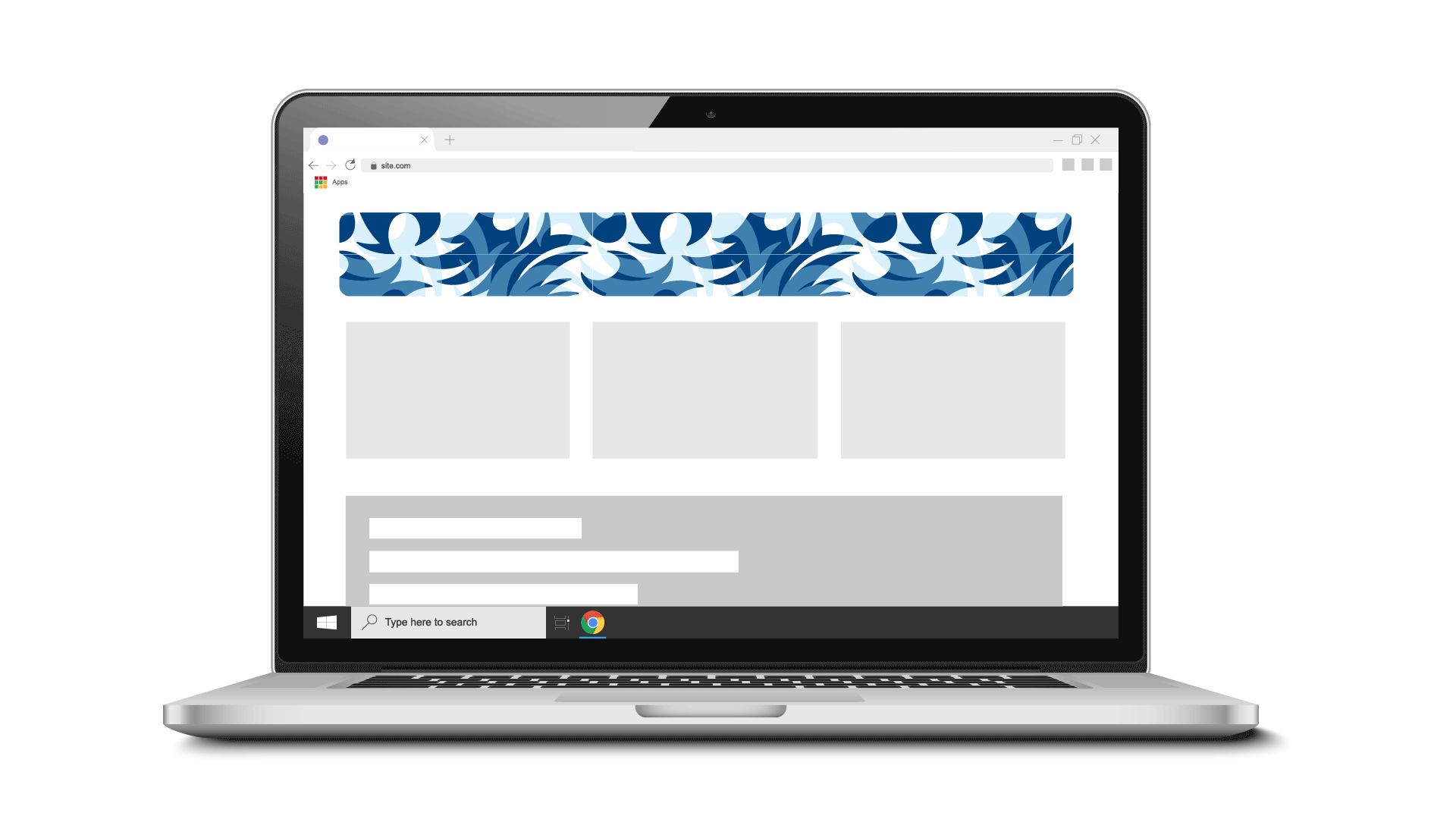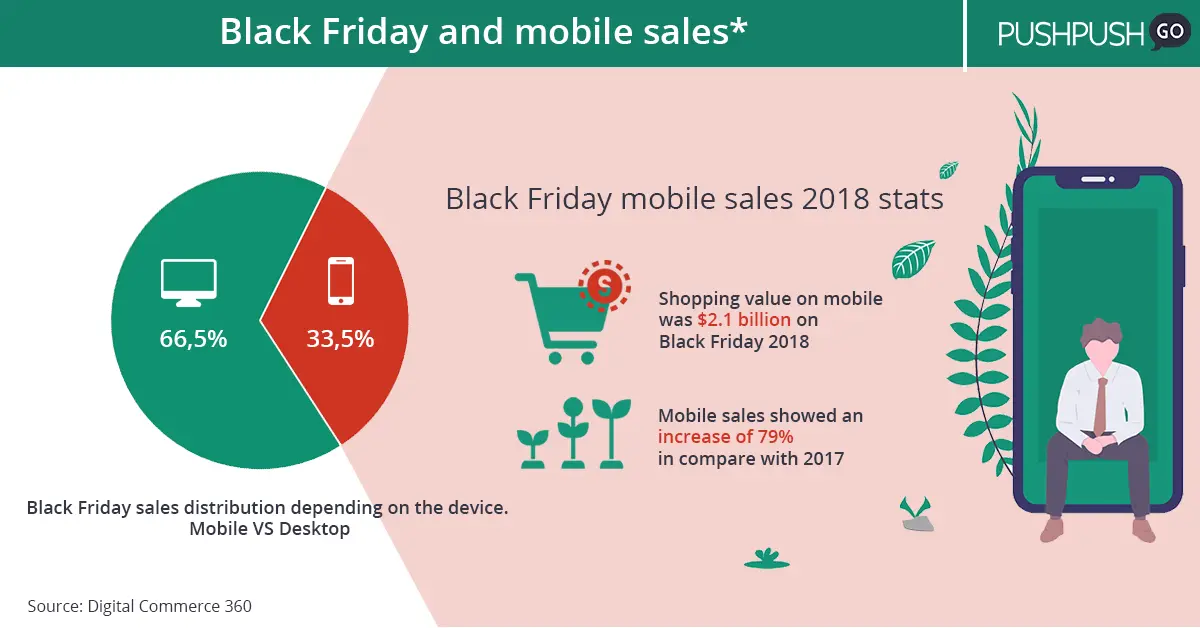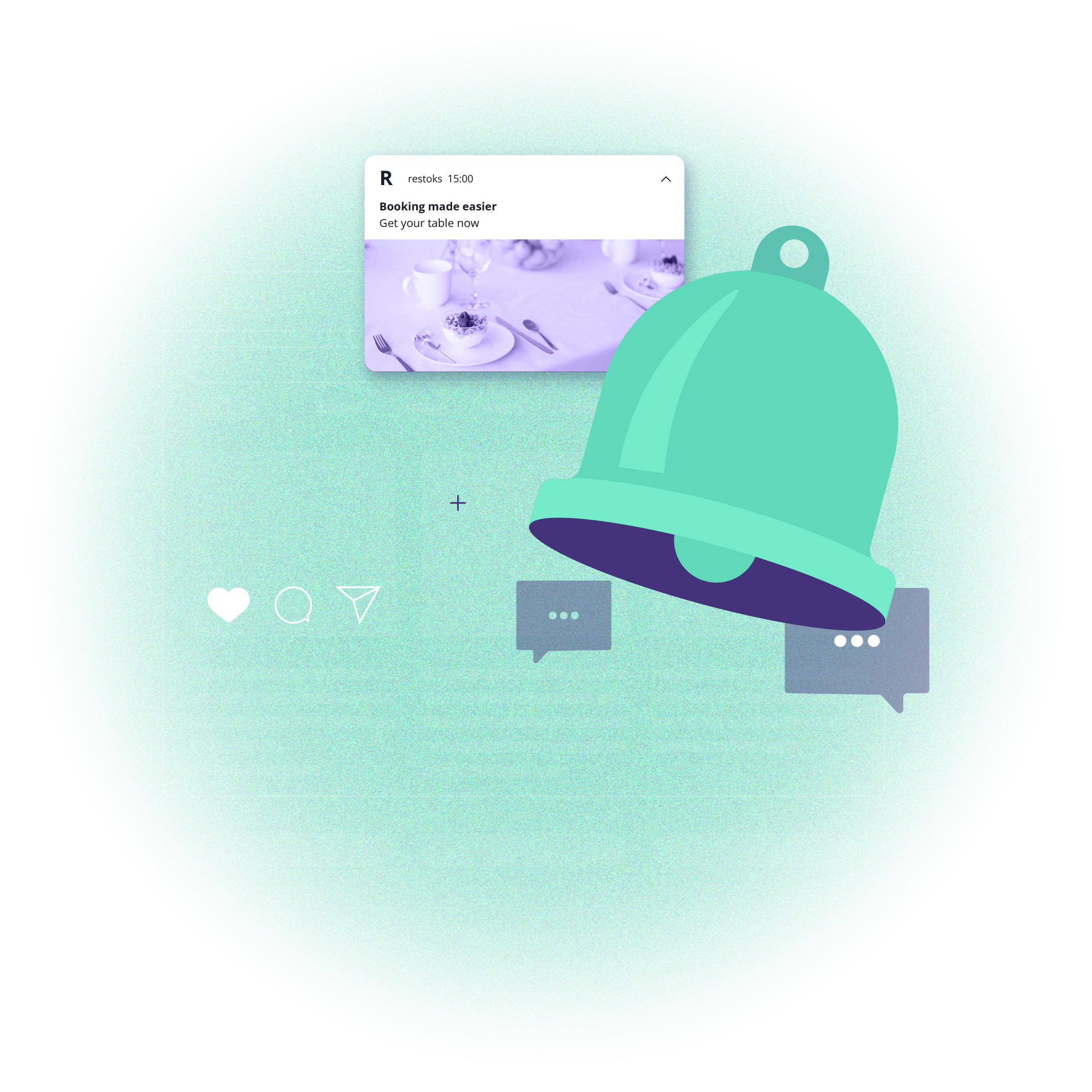8 lessons learned from Black Friday 2018
 Aleksandra Kozioł
Aleksandra Kozioł
8 lessons learned from Black Friday 2018
 Aleksandra Kozioł
Aleksandra Kozioł
Black Friday has passed and brought us some statistics which we can interpret and turn into tips for the next year. The busiest shopping season continues and has already proven foreseen predictions.
1. Customers are more eager to buy online
U.S. brick and mortar shops experienced from 5% to 9% decrease of shoppers during Thanksgiving and Black Friday (according to RetailNext which measured traffic by cameras inside malls and stand-alone stores). Meanwhile, online shoppers spent $6.22 billion on Black Friday, which makes it 23.6% higher record than last year at the same time (Source: Digital Commerce 360).
If you have both online and offline store focus mainly on e-commerce next year. Shoppers find online shopping easier and more comfortable than standing in endless queues. Many stores placed their best deals online, so it’s also not a surprise, but we can notice a trend in this phenomenon.
2. Free shipping is the key to success
On Thanksgiving, 81% of orders had this benefit (Source: Digital Commerce 360). Even if usually your shops have different rules, like free shipping for a minimum cart value, etc., this time you need to make an exception because that’s what customers’ expectations in this time.
Cost-less delivery convinces customers because they can spend that much as they predict. Probably not many people think about an additional budget for shipping. On Black Friday the competition is so wide that you have to acknowledge some of the trends to keep up. Not even mention that for some e-commerce free shipping is a standard, as well as return and exchange, so shoppers don't have to worry about additional costs.
3. Brace your e-commerce technologically
Many retailers this year experienced glitches and malfunctioning on their website. You’d think it’s an issue only of the smaller and unexperienced online shops, while in fact, it regards even a few of the Internet Retailers 1000 (the leading 1000 e‑retailers selling in U.S. and Canada) like Lowe’s Cos., Walmart Inc., Lululemon Athletica Inc., J. Crew Group Inc., Kohl’s Corp. Lost carts, error pages, websites’ sluggishness an so on happened this year in many e-stores, which annoys customers.
Excellent user experience and server that handles even massive traffic are crucial. Otherwise, what’s the point of ad campaigns if your customers can’t fulfill their shopping impulses? A system has to be perfectly prepared for automatic discounts - one mistake can turn Black Friday into colossal money loss.

Increase your holiday sales with web push notification platform. Start testing now - always free up to 500 subscribers!
4. Mobile purchases are getting more and more popular
Black Friday 2018 broke the record of purchases via smartphones. An increase of 79% brought the $2.1 billion shopping value. It was also more than one-third (33.5%) of the whole online shopping on this day (Source: Digital Commerce 360).
Mobile version of the e-commerce is not a trend - it is a total must-have! A mobile app is a good solution, but don’t forget about the responsive web design. Not everyone is eager to install an app; some users only want to shop once, especially when there’s a great deal. Everything, including payment, needs to run smoothly for shoppers to finalise the purchase.

Black Friday and Mobile Sales. Source: Digital Commerce 360
5. Shoppers more trust in e-commerce
Average value of the order has increased and this year set up a record $146 which is 8,5% more than last season (Source: Digital Commerce 360). Clearly, clients feel more comfortable with online shopping and are more willing to spend more for e-commerce experience. The biggest concerns regarding e-retailers are security (payment and data), the rules of exchanging and returning and lack of personal customer service. You need to provide all of those aspects and inform your customers about it on social media and other marketing campaigns. You can consider hiring a team member dedicated to those issues. For better cybersecurity monitor for failed login attempts, logins located outside the country and increased usage of the gift cards.
6. Website traffic comes the most from direct entry
Direct traffic on the website ranks highest for driving sales this year at 27.2% share of sales, up 0.3% from a year earlier. That’s followed by other traffic sources as: paid search at 24.0% (up 6.1%), natural search at 20.8% (down 5.5%), and email at 20.4% (up 2.6%) (Source: Digital Commerce 360).
Customers are aware of the upcoming Black Friday, and they expect discounts. That proves the effectiveness of campaigns in advance. Prepare your marketing strategy to inform your audience about your special offers. Remind about your brand and products directly and in the most accurate time via e-mail or web push notifications.
Watch this video to learn how to prepare web push campaign for holiday season.
Moreover, shoppers are probably looking for discounts on their favourite websites as they expect deals everywhere. Natural search brings still a high number of visitors so remember to optimise your e-commerce for this purpose.
7. Buy online, pick up in store - as a popular solution
While enjoying Thanksgiving and the day after that, some customers were ordering online to pick it up later. Store pickups of orders proceed online have risen 73% over Thanksgiving and Black Friday in comparison to the same days last year (Source: The Wall Street Journal).
It’s a great combination of all the advantages that come from online and offline shopping. Instead of standing in the queue shoppers can spend the time with their families (with a short break for hunting the best online deals) and just stop by in the store in the following days to pick up the order without unnecessary waiting and with certainty what they get. Think about implementing this solution next year.
8. Black Friday has transformed into Black Weekend
Shopping on Saturday after Black Friday brought $400 million for e-commerce. It’s an increase of 24.3% from the previous year. On the other hand for the first time on Thanksgiving prices were as low as on the following day.
Black Friday is now changing into „Black weekend”, „Black Days” or even „Black November”. Depending on stores discounts last from one day to even a month. Some of the biggest e-commerce provides special offers for all shopping season. Obviously, not every e-store can afford that, but at least „Black Weekend” can be a good idea as it gives customers the time to find the best discounts. Considering that Thanksgiving is only celebrated in few countries around the globe, it’s smart to offer special deals on the weekend for those who have to work.
Every year customers change a bit, as well as their interests and preferences. We live in a digital era so that e-commerce will develop even more in the future. New generations grow up and fulfil their shopping desires. Make the most of it next year on Black Friday and now on the upcoming Christmas shopping season. Be aware of cybersecurity challenges that every busy period brings.

Content Specialist @PushPushGo
Editor and writer. She is interested in media and new technologies.





